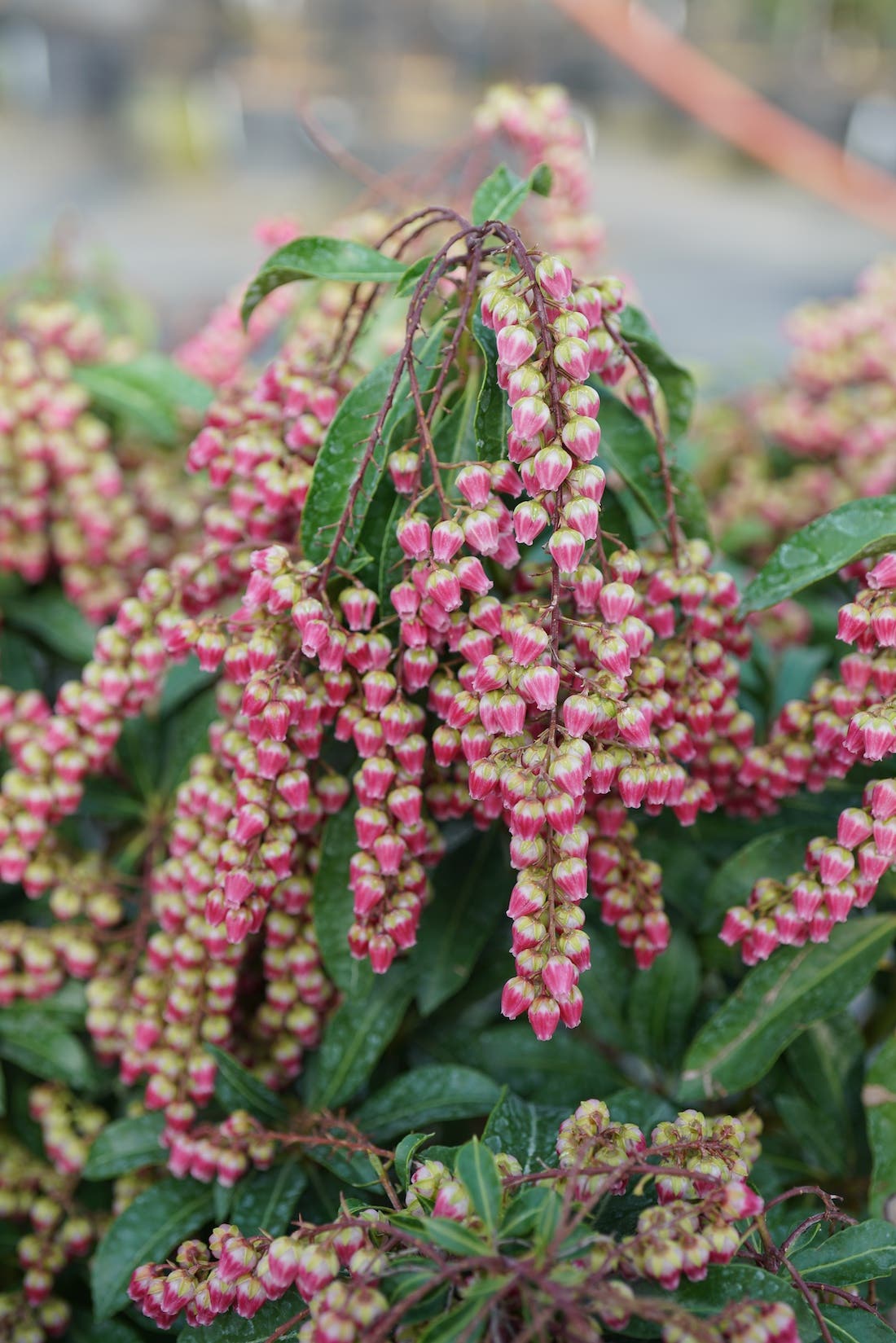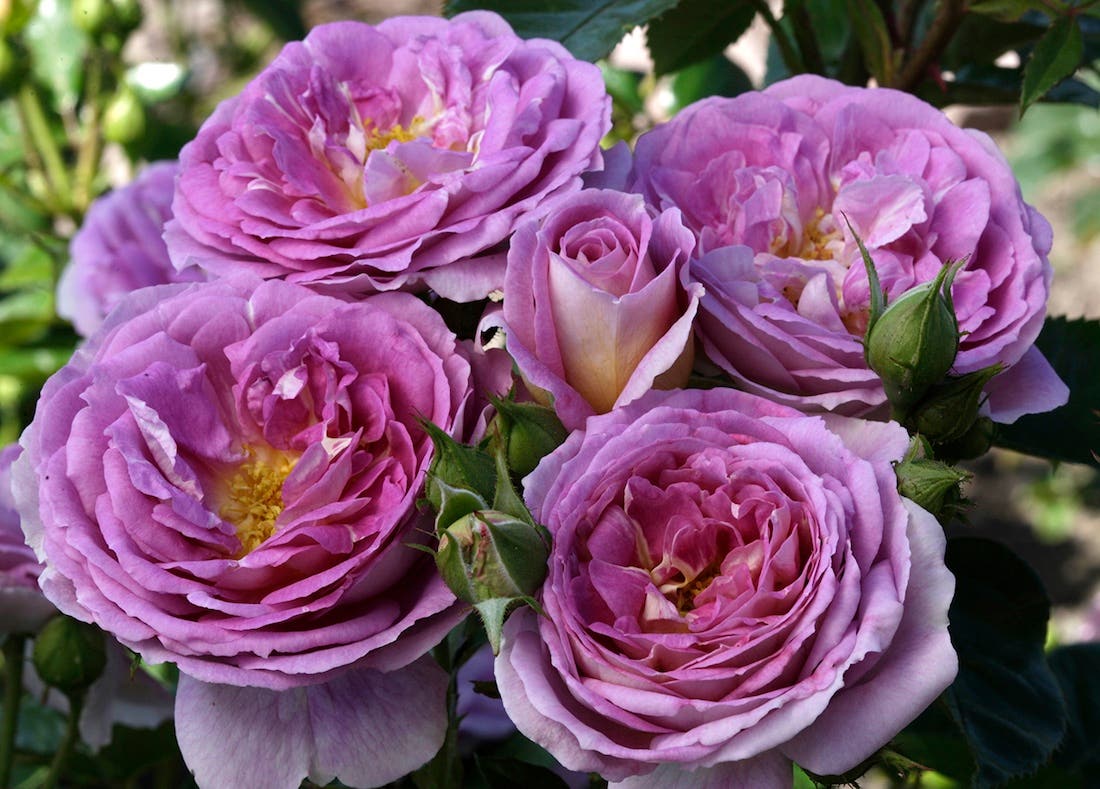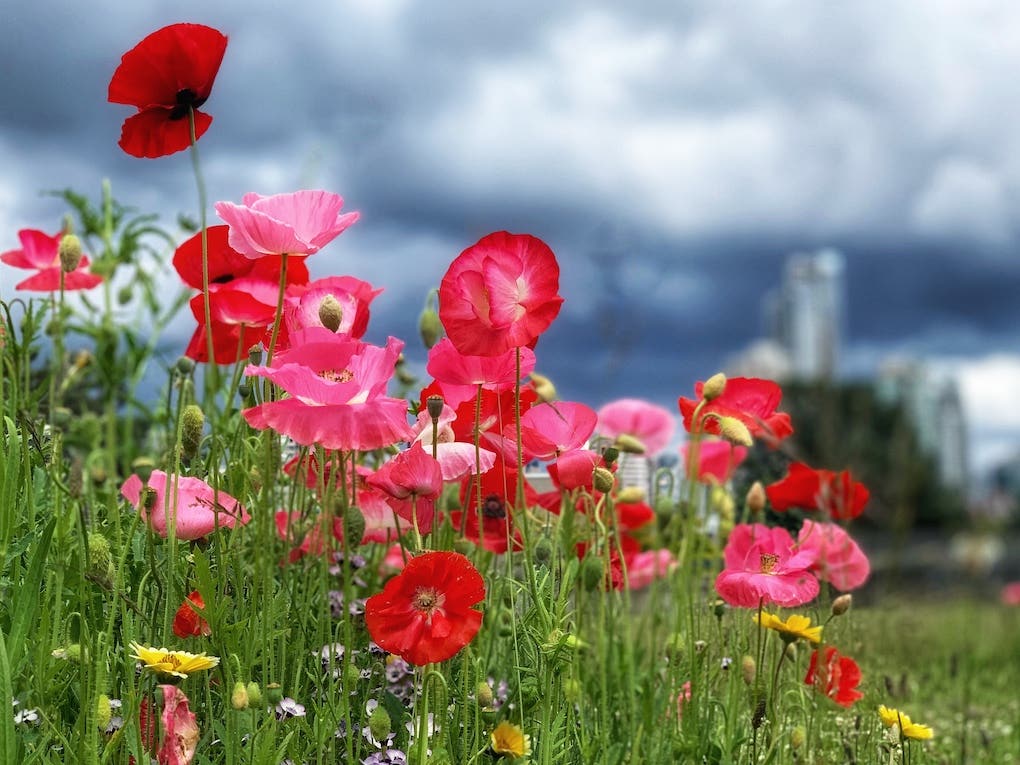The Dwarf Daphnes
Dwarf daphnes are small shrubs that offer a large dose of beauty and fragrance with their spring flowers
Once you have lived with daphnes, you can't imagine gardening without them. They vary from diminutive species to large, bushy creatures, each with its own charm. As a bonus, many bear flowers with a heavenly fragrance, enchanting the garden both by night and day. Others offer bright orange or red berries in late summer. Most have a graceful form and pleasing architecture, adding dignity and substance to the garden throughout the seasons. Although there are many, many daphnes, arguably the most fascinating are the small species, which also have the advantage of being appropriate to a small garden setting or rock garden.
GARLAND FLOWER
My first acquaintance in this group was with Daphne cneorum ‘Ruby Glow’ (hardy in USDA Zones 4-9), a cultivar of the so-called garland flower that is the most widely available daphne hardy in the northern half of the country. After 10 years in my Denver rock garden (USDA Zone 5), my plant is about two feet across, although in other parts of the country, from New England to Moscow, Idaho, D. cneorum can grow to four feet in diameter. The stems reach out from a central taproot to perhaps 10 inches, arching a bit before they return to earth. The narrow, entire-margined, evergreen leaves bring to mind members of the heath family such as bog rosemary or cranberry, even though daphnes belong to an entirely unrelated family, the Thymelaeaceae. If you can't grow dwarf azaleas or rhododendrons, daphnes can provide equally substantial foliage and form. But come late April, there's no confusing the two groups: the daphne covers itself with clusters of small, heavy-textured pink flowers that suffuse the air with delicious, heady fragrance, upstaging every other plant in the garden.
The first, ‘Ex-imia’, has slightly larger flowers of a lighter hue. The other, ‘Pyg-maea Alba’, is noticeably less vigorous, and reaches only half the size of ‘Ruby Glow’. The flowers are white, of course, and the foliage a bit paler green. (In fact, this form can suffer from chlorosis on occasion. A little chelated iron at the base restores it to health.) Despite its seeming delicacy, ‘Pygmaea Alba’ has persisted longer in some places in my garden than the pink-flowered forms.
RARE AND CHOICE DAPHNES
Daphne arbuscula (Zones 5-8) is my second love. Only about five inches high, it bears deep green foliage and rich pink flowers. I have a lovely specimen now seven years old, and until a few months ago I had another beauty, perhaps 12 inches wide and 18 inches long. Alas, I apparently allowed it to dry out. I pruned off the dead branches, hoping to save the still-green twigs at the center, but once a daphne begins to die it's difficult to reverse the process.
Unfortunately, D. arbuscula is a challenge to propagate—you can't just take a few cuttings, stick them in potting mix, and get a batch of new plants. Propagation from cuttings is possible, but it's a dicey business. (Readers who want to attempt it should consult Daphne: The Genus in the Wild and in Cultivation by Christopher Brickell and Brian Mathew [Alpine Garden Society, 1981]; available through www.amazon.co.uk.) Why not just sow seeds, then? Well, many daphnes rarely produce seed in cultivation—the long, tubular flowers may not attract our native pollinators. In the case of D. arbuscula, it's also rumored that all the plants available in this country have been propagated from a single clone, which appears to be self-sterile. To make matters worse, the species is considered endangered in Slovakia, where it is restricted to just a few locations in the Muran Hills. My hope is that more strains will become available soon so that keen growers can cross-pollinate different clones and thus obtain seed.
Although D. arbuscula may be self-sterile, it has managed to produce (with D. collina; see page 98) an extremely attractive hybrid, D. ‘Lawrence Crocker’ (Zones 6-9). This compact gem (to 12 inches high and wide) is a home-grown product, named for one of the founders of Siskiyou Rare Plant Nursery. It forms a dense mound of glossy, dark, evergreen foliage, liberally sprinkled with clusters of deep pink flowers.
A TRAILING DAPHNE
The fairy sprite of the daphne world is surely D. jasminea (Zones 5/6-9). The species name is misleading, however—the clone in commerce is scentless. I first saw it as a large, prostrate, trailing plant in a wooden half-barrel. It didn't look terribly impressive, but then it was February. Despite being assured that this treasure wouldn't be hardy in Zone 5 Colorado and would never take to open-garden cultivation, my husband begged cuttings and brought the prize home. Eventually we raised seven plants, distributing them over many different areas and aspects of the rock garden. Three years later three plants remained, and now 10 years later, there is but one. But such a one! This plant was given a home in a three-inch crevice between two vertically placed boulders. It has now wrapped itself up against the rock on both sides, clinging as tightly as a frightened toddler to his mother's shoulder. The central trunk is over an inch thick. The beauty of this plant is difficult to describe: the leaves are about a half-inch long, wider above the middle, and a far-away mountain blue green. The flowers are sparse at most times during the growing season, but toward the end of August the plant is liberally studded with these waxy white stars. I have thousands of plants in my garden; this daphne is my favorite.
I wouldn't try D. jasminea in the perennial border or on flat ground. Give it a rock for company, however, and you will be delighted with the results. Or grow it in a trough, where it has room to drape itself over a rock or the edge of the trough. Like D. arbuscula, this is a rare plant in nature, restricted to just a few mountains in Greece, notably the cliffs above Delphi, the principal shrine of Apollo.
EASY DECIDUOUS DAPHNES
There are a number of compact, deciduous daphnes that arc easily grown from seed and quite permanent in the garden. Daphne alpina (Zones 4-9) has silvery leaves and a compact habit. Abundant white clusters of flowers appear in April and May as the leaves emerge, followed by brilliant orange berries for a few weeks in summer until the birds discover them. I assumed from the plant's name this would be a tiny alpine, and so tucked my first seedlings in a crevice garden. Today, they are two feet tall and across and still growing.
Daphne oleoides (Zones 4-9) is similar, differing in having darker blue leaves and a more mounding habit. This widespread species is extremely variable; some of the subspecies are much tinier and very desirable for trough or rock gardens, or perhaps as container specimens. Daphne oleoides var. kurdica comes from Turkey, and tops out at eight inches for us. Daphne kosaninii is sometimes regarded as just a subspecies of D. oleoides. It is another miniature, less than a foot tall, with squinny pink flowers that transform into luminous orange berries by midsummer. It is extremely heat and drought tolerant,
CHINESE DAPHNES
Two of the loveliest daphnes for foliage effect come from China. Daphne retusa (Zones 5b-10) and D. tangutica (Zones 5a-10) are closely related, both forming symmetrical mounds of lustrous, dark green leaves eventually reaching 30 inches (or even taller) and a bit wider. Their showy clusters of white flowers start opening in April and last well into June. The individual flowers are often stained a deep purple on the back of the petals, adding to their appeal. Both species produce brilliant scarlet berries almost the size of marbles, which, along with the dark green foliage, give the garden a strangely Christmasy look in midsummer. Daphne retusa is marginally hardy in Denver's Zone 5, occasionally freezing a bit in exposed spots. The foliage is ampler than that of D. tangutica, and the plants habit is more symmetrical. Because D. tangutica is distributed far to the north of D. retusa in the mountains of China, it is much hardier.
MEDITERRANEAN DAPHNES
Daphne coliina (Zones 7-9) and D. sericea (Zones 6-10) are another pair of fine, small, evergreen shrubs from the mountains around the Mediterranean. They have intensely fragrant clusters of bright pink flowers and hairy, dark green, rosetted clusters of leaves that provide a dignified backdrop for plants with daintier foliage and flowers. Both commonly grow to several feet in height, but in Denver they have thus far been marginally hardy, dying back in severe winters. In areas in Zone 6 and above, these are among the finest of compact shrubs.
How to Grow Daphnes
Daphnes have a reputation for being miffy. It is true that it's easy to kill them by treating them roughly, letting them dry out. or transplant-ing them frequently Yet I have found them no harder to establish than butterfly weed, clematis, or even trumpet vine. If you can keep your daphnes happy through their first season. you will likely have them for a long time. Daphnes need a soil that drains freely yet never dries out completely. They are often grown in rock gardens but will also grow on flat ground, provided the above conditions are met. In coastal regions, bloom will be best in full sun; here in Colorado we grow them where they are shaded much of the day, especially in winter. There is some debate about which species require acidic or alkaline soils. Many species appear to be indifferent to soil pH-even some that are native to limestone mountain ranges. In general, a near-neutral soil (around pH 7.0) is likely to please most daphnes.







